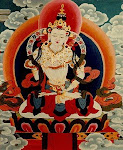Kaibigan,
The National Library is 121 Years Old. According to Director Prudenciana C. Cruz, it was in August 12, 1887 when a Spanish Royal Decree created the Biblioteque Nacional. A slew of subsequent legislations led to the evolution of what is now known as the National Library of the Philippines, of which she is the current head.
The building of the NLP was one of the handsomest buildings in the area when it was first built in 1961. It has withstood time and the harsh earthquake of 1990. Its original elevator is still what ferries passengers and books between the floors. And if you love high ceilings, speckled marble floors, old wooden tables, and helpful librarians who know their books, you will find your heaven here. The left wing of the building is occupied by the Archives Management Office. Why it is there is another story.
The two men represented in the sculptures found in front of the National Library are not the first librarians of the Philippines, contrary to what I heard a guide once say to a bunch of Japanese tourists. Maybe he had that idea because in both sculptures, the figures are seated as if ready to catalogue a book and whisk it off to shelving. But if he had looked closely enough, he would have found out that the statues had nothing to do with the National Library and more with the streets fronting the building -- on the left is Teodoro M. Kalaw and on the right is Apolinario Mabini.
When a balikbayan cousin comes to visit Manila, you might want to use the NLP as a boasting point. The original manuscript of the Noli Me Tangere (yes, the one handwritten by the Dr. Jose P. Rizal) is part of the collection of the National Library. Understandably, it is kept in an airconditioned vault where it may be better preserved against the harsh heat of the tropics.
I don’t know about you, but I love books. I collect them like I do shoes or prints of old maps. Sometimes, I buy books for the aesthetic pleasure of their arresting covers, their content, or their age. Sometimes, I find myself very lucky to find these three elements in one book. In one of my forays to the second hand bins in a Recto bookstore, I picked-up the original language version of Henrik Ibsen’s Peer Gynt published in 1951. I bought it en seguida, even though I don’t speak a word of Swedish. What made my purchase compelling was that when I was still a freshman, I had the honor of translating this particular play into Filipino (from the English version) for Tony Mabesa’s Dulaang UP Production.
I crave handling books in my hands. Like an anthropologist with an artifact. In between reading the chapters I spend time feeling the book’s paper, admiring the binding and sniffing that weird mixture of dried ink and glue that wafts up as you open and close its new pages. With an old book, specially those which are older than me (and at my age now, I find this happening less and less), I become reverential. How can one not, when these old books carry words which have traveled through time. I begin by clearing the table of all other things before placing the book exactly in the middle of the space. I contemplate the cover while letting it breathe and become familiar in its new place. I imagine the people whose hands have handled the same book. When it is time—when the book signals me to begin—I affectionately and carefully turn over the cover and travel through its pages.
When beset with stressing deadlines, other people smoke, drink or overeat. Me? I visit the second hand book sellers along Recto. Sadly, these bibliographic forays have yielded less and less gems in the recent years, the bookstands’ wares slowly giving way to standard second hand textbooks and novelty store sex aids. My suking Manong doesn’t even sell erotic magazines anymore. The accessibility of images in the internet has adversely affected their market.
The next best thing for me is to go to the rare books section of the National Library, where many a rare book or manuscripts is just waiting for chance encounters. The last time I went there, I had a look see of Harper’s History of the War in the Philippines. As you know this book is one of the few narratives on the Phil-American War. The copy found in the NLP is book number 45 of only 550 book in print. This book was published in 1946 and reads like a fact book with pictures of the era. Here’s some of the interesting pictures between its pages.
Subscribe to:
Post Comments (Atom)



No comments:
Post a Comment